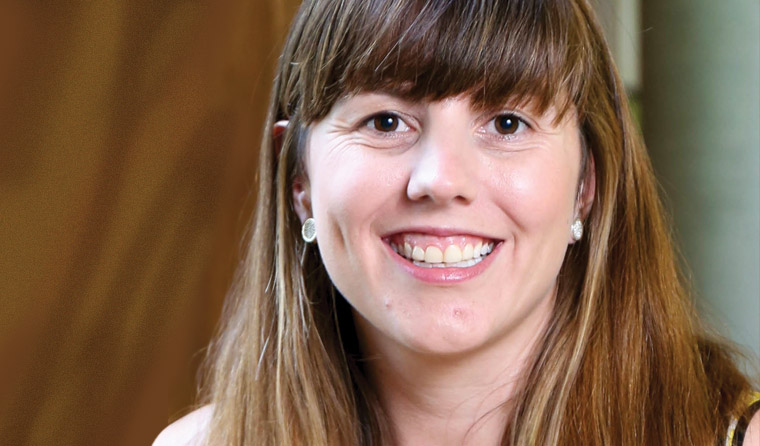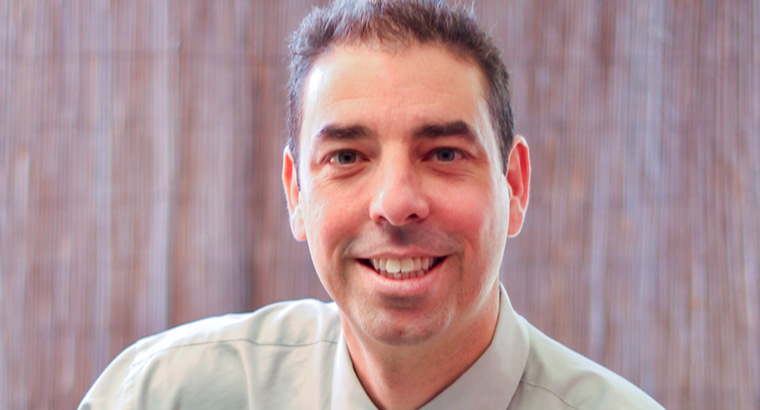Feature
Is there enough public data on COVID-19 vaccine hesitancy?
The take-up rate of vaccines will shape Australia over the coming months. A mathematician, a social scientist and two GPs discuss the publicly available data.
 There is a deluge of information around COVID-19 – but is it well targeted?
There is a deluge of information around COVID-19 – but is it well targeted?
Correction: This article was updated at 8.20 am Saturday 17 July because it incorrectly stated SA had the lowest rate of over-70s who have received one dose of COVID vaccine.
The COVID-19 pandemic has unleashed an unprecedented wave of public data, in turn creating a new army of amateur epidemiologists and statisticians.
There is a deluge of information – the daily case numbers, efficacy rates, hospitalisations, the transmissibility and myriad other details – but is it well targeted? And could general practices benefit from other datasets in the crucial vaccination stages of Australia’s pandemic response?
Earlier this month, the Federal Government said it plans to shift the emphasis away from one of the most scrutinised of those figures in Australia – the COVID-19 case numbers. Following the lead of other nations, the focus will move towards tracking the levels of serious disease as its four-phase plan evolves.
The Doherty Institute has been tasked with modelling the vaccination levels required for this plan to progress, with further details expected this month.
The level of vaccine access will shape the success of the scheme, with the well-publicised supply issues surrounding Pfizer taking centre stage for now.
Another key will be tracking and addressing vaccine hesitancy in the community. One advantage of the lagging rollout in Australia could be the lessons learned from other places which are further along the vaccination path.
In the UK, for example, a study published in the British Medical Journal highlighted low levels of vaccine take-up in certain ethnic groups, with the authors warning of ‘serious implications’ if the discrepancy is not addressed.
‘The pandemic continues to have a disproportionate effect on people from ethnic minorities, with higher COVID-19 morbidity and mortality, and greater adverse socioeconomic consequences,’ they wrote.
‘Without an effective vaccination strategy to mitigate the risks, the situation will worsen.’
In the United States – where the vaccination strategy is also much further ahead – there are similar concerns about gaps in the rollout. Dr William Schaffner, a Professor of Preventive Medicine at Vanderbilt University Medical School, recently told news network CNBC vaccine hesitancy is now the biggest obstacle facing the program.
Wide variations in vaccination take-up are being recorded in different states – from more than 80% in Vermont to around 36% in Mississippi. However, there has also been some debate over whether access or hesitancy is the main issue in the US.
Current vaccine rollout data
So, what – if anything – can we glean from data currently available in Australia? And are there any other details that might help GPs and the wider rollout reach as many people as possible?
As it stands, there is a daily update published every afternoon on the Department of Health (DoH) website, offering a snapshot of vaccinations around the country.
The updates began in March then started on a daily basis on 9 April shortly after the number of doses administered exceeded a million. It originally showed the number of primary care doses administered as well as those carried out by the state or territory governments.
Now, the level of detail in those updates has evolved. It still shows the crucial part primary care is playing – having delivered more than 50% of the doses so far. However, from the beginning of July, a more in-depth breakdown has been included with precise detail for the uptake in different age groups, and how the states and territories compare.
Already, gaps are showing. In the ACT, for example, the take-up is notably higher than anywhere else in the country. In that area, 92.54% of those aged 70 and over have had a first dose, compared to the lowest rate of 72.3% in NSW as of 16 July. Tasmania is also higher, where more than 80% in that age-group have had first doses.

Associate Professor Holly Seale believes the emergence of the Delta variant in Australia has changed some of the sentiment about COVID vaccines among younger age groups.
There is relatively little daylight between the other states and territories, although one stand-out figure is where the most over-70s have been vaccinated with two doses. At more than 40%, that is recorded as the Northern Territory, an indication that remoteness does not necessarily preclude access.
Dr John Deery, who runs a general practice offering COVID-19 vaccinations in the ACT, says the rate could be even higher if Pfizer had been available in greater quantities – and does believe geography is playing a part.
‘I think one of the reasons Canberra’s uptake is high is it’s a small area and there’s no rural and remote areas, it’s just one big town,’ he told newsGP.
‘We’d like to see more vaccinations, but it’s obviously well ahead of the curve of the rest of Australia.’
Even with the high vaccination rate in his area, Dr Deery believes hesitancy is still a notable factor from the conversations he is having with patients.
‘I can understand why people are hesitant,’ he said. ‘There’s a lot of bad press out there about the AstraZeneca vaccination.’
For him, the level of detail currently offered is adequate, but he says it would be a different consideration elsewhere.
‘In my local area, it wouldn’t really change the way I would talk to my patient base about getting vaccinated,’ he said.
‘[But] a more regional look at the states would be useful. Getting some more data there would be very useful for promoting [the vaccine] in those areas.’
For Associate Professor James Wood, an applied mathematician from the UNSW’s School of Population Health, the current government statistics do not tell us much about vaccine hesitancy for now – although again he believes publicity surrounding AstraZeneca has slowed the process.
‘I’m not sure that we have any great data on this but certainly there has been more AstraZeneca vaccine available than has been used,’ he told newsGP.
‘I think both absence of perceived risk and concerns over the very rare but serious side effect of the AstraZeneca vaccine have both contributed to uptake being less complete and slower than ideal in highest risk groups.’
The ABS Household Impacts of COVID-19 Survey
One other source that has given a wide-ranging snapshot of attitudes towards the virus and vaccines comes from the Australian Bureau of Statistics (ABS), where a monthly Household Impacts of COVID-19 Survey has been conducted since April 2020.
The latest – and as it turns out final – survey was released this week. It shows the results from queries asked from 11–20 June to 3414 continuing participants on a wide variety of issues relating to the pandemic, from job status to vaccine take-up.
Among the stand-out figures are the reasons given by those who have not yet had a dose of the vaccine.
More than a third (34.8%) of those aged 50–69 said wanting a different vaccine than was available to them was a factor for them not getting any dose so far.
A total of 11.4% said they disagreed with the statement they would get a COVID-19 vaccination as soon as it was available to them, with those numbers higher among the younger age categories.
However, Associate Professor Holly Seale, an infectious disease social scientist also at the UNSW’s School of Population Health, said that even though it was released this week, the survey is already likely to be dated.
‘This [Delta] variant has shaken that up. This data is being collected as of June,’ she told newsGP.
‘We hadn’t yet had that media attention [on the new outbreak] – and the fact that we now have younger people in ICUs.
‘I do have a strong sense that has changed some of the sentiment in that younger age group about their own personal risk, about the severity of this particular strain.’
She believes it suggests more needs to be done to prime that group for vaccination, particularly in light of suggestions vaccination rates will need to be high among children and adolescents too.
‘They haven’t been engaged. In the mass media the priority is about getting those in the older age group vaccinated and those who are at occupational risk,’ she said.
‘We’ve done nothing yet to activate this younger age group. I would like to see more of that happening.
‘By being activated, by being primed, the research shows people are more likely to go into see their GP and their health provider with a more positive mind frame.’
Associate Professor Seale was also struck by a finding from the survey, with more than 90% of those having had at least one dose reporting it was easy to get.
‘I thought it was really positive,’ she said.
 Dr Sean Stevens, a member of the RACGP’s COVID Working Group believes data offering insights into why vaccine take-up is low in some cohorts would be most helpful.
Dr Sean Stevens, a member of the RACGP’s COVID Working Group believes data offering insights into why vaccine take-up is low in some cohorts would be most helpful.
Will more details become available?
Associate Professor Wood believes extra detail would help.
‘I’m very supportive of more granular data being available publicly,’ he said. ‘Data by local government area or similar statistical areas [SA3, SA4] would be very useful in the public domain.’
The DoH, meanwhile, says Lieutenant General John Frewen, who was put in charge of the Federal vaccine rollout response in March, is currently undertaking a review of the data supplied. A statement given to newsGP attributed to an Operation COVID Shield spokesperson pointed to the additional information on doses by age, sex, state and territory now being published.
‘LTGEN Frewen will continue to review data and release more data sets over the coming weeks,’ the statement said.
The ABS, however, told newsGP there are currently no plans to look at the levels of vaccine hesitancy now the household impacts survey has been discontinued.
Dr Sean Stevens, a member of the RACGP’s COVID Working Group, says more information would be welcome, but that many doctors will naturally concentrate on the people they regularly see in their consulting rooms.
‘I think GPs are most focused on their own practice and patients and what they can do to encourage them to become vaccinated,’ he told newsGP. ‘It’s very difficult to convince people from your local area to get vaccinated if they are not your regular patients.’
For him, it is data offering insights into low vaccine take-up that would be most helpful.
‘What would really help GPs is an understanding of the types of things causing hesitancy in patients,’ he said.
‘You can assume it’s all going to be around the media reporting, but there may be other issues that as GPs we should consider or should enquire about.’
Log in below to join the conversation.
coronavirus COVID-19 vaccine hesitancy
newsGP weekly poll
As a GP, do you use any resources or visit a healthcare professional to support your own mental health and wellbeing?